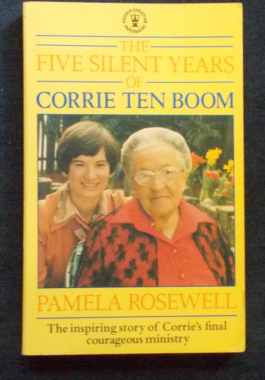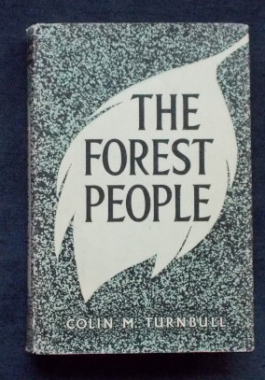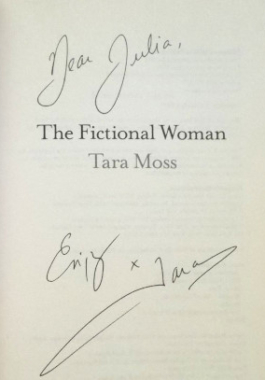-
 Seventy years after her death, the name Mata Hari still commands interest. Here is the story of a Dutch hat-maker's daughter who was executed for espionage after a secret trial during World War I. The author examines the myths and fantasies that have grown up around the woman who has been portrayed as a dangerous vamp, a cunning vixen and a murderess idealised for her beauty. Illustrated with black and white photographs.
Seventy years after her death, the name Mata Hari still commands interest. Here is the story of a Dutch hat-maker's daughter who was executed for espionage after a secret trial during World War I. The author examines the myths and fantasies that have grown up around the woman who has been portrayed as a dangerous vamp, a cunning vixen and a murderess idealised for her beauty. Illustrated with black and white photographs. -
 Whether or not this hefty volume contains absolutely every film ever made between the title dates, we can't say. But it is comprehensive! Each entry lists the leading actors, release dates, running time, alternate titles, distributors and ratings. It includes foreign films, documentaries, animated features, silent films, short features and movies made-for-TV. It even includes film companies no longer in business. Black and white photos.
Whether or not this hefty volume contains absolutely every film ever made between the title dates, we can't say. But it is comprehensive! Each entry lists the leading actors, release dates, running time, alternate titles, distributors and ratings. It includes foreign films, documentaries, animated features, silent films, short features and movies made-for-TV. It even includes film companies no longer in business. Black and white photos. -

Corrie Ten Boom was known and loved by millions for her book The Hiding Place which told how her family hid Jews from the Gestapo during the Nazi occupation of Holland. Her life launched Corrie into writing, travel and speaking of her experiences. Englishwoman Pamela Rosewell was Corrie's constant companion in the last years of her life. She describes the sheer energy and loving dedication which marked the final active years of Corrie's ministry and testifies to the practical love and concern Corrie inspired in others when strokes made communication hard and rendered her virtually immobile. This tribute will move and encourage the thousands who have come to love the courageous Corrie Ten Boom.
-

The Fixer: Marian Wilkinson
$18.00Walkley Award-winning journalist Marian Wilkinson delivers a stunning exposé of Graham Richardson, who was for twenty years was one of the most powerful figures in the Australian Labor Party. From back rooms to board rooms, Richardson held levers that drove the cogs of the ALP machine - if there was a deal to be made, Richardson was The Fixer. His rise to power was marked by explosions of violence and bitterness, won him rare political influence and at times brought his career to the edge of disaster. Here will be found the truth behind: the bashing of Labor MP Peter Baldwin; the making and breaking of Bob Hawke, P.M.; the Love Boat incident; the Gold Coast prostitution scandals and the Marshall Island affair.
-
 Fleetwood Mac have lived through 35 years of turbulent rock history: as successful 60s blues band Chicken Shack; the hard times after the defections of Peter Green and Jeremy Spencer; the 1974 rebirth with Stevie Nicks and Lindsay Buckingham; divorce, bankruptcy and the 25 million-selling Rumours album. This no-holds-barred biography charts the incredible story up to the 2003 reunion tour and Say You Will album.
Fleetwood Mac have lived through 35 years of turbulent rock history: as successful 60s blues band Chicken Shack; the hard times after the defections of Peter Green and Jeremy Spencer; the 1974 rebirth with Stevie Nicks and Lindsay Buckingham; divorce, bankruptcy and the 25 million-selling Rumours album. This no-holds-barred biography charts the incredible story up to the 2003 reunion tour and Say You Will album. -

 A wonderful, charming book on the flowers and gardens of Japan - not just any tourist book, but one which also discloses the spirituality behind Japanese garden plans and why they are planned as they are. It was published in 1908 and has fifty beautiful colour illustrations. (See gallery photos for artwork examples) From Chapter II: Stones, Garden Ornaments and Fences. Stones and rocks are such important features in all Japanese gardens that when choosing the material for the making of a landscape garden, however large or however small, the selection of the stones would appear to be the primary consideration. Their size must be in perfect proportion with the house and grounds which they are to transform into a natural landscape, and they will give the scale for all the other materials used - the lanterns, bridges, and water-basins, and even the trees and fences. Their number may vary from five important stones to as many as 138, each with its especial sense and function. I think the correct position and placing of the stones is the part of the art which it would be most difficult for a foreigner to accomplish: the mere names and special functions of the stones would require years of careful study. To the eye of a Japanese one stone wrongly placed would upset all the balance and repose of the picture. Large rocks and boulders seem to be essential for the success of a large garden, and are used to suggest mountains, hills, and the rocks of the natural scene; any very fantastic and artificial looking rocks are avoided, for fear they should give an appearance of unreality to the landscape. The fancy of giving sex to certain stones, and in temple grounds of assigning holy attributes and even of giving them the names of Buddhist deities, dates from very early days, and this custom of applying a religious meaning to the most important rocks survives to this day. Mr. Conder tells us that "formerly it was said that the principal boulders of a garden should represent the Ku, or Nine Spirits of the Buddhist pantheon, five being of standing and four of recumbent..."
A wonderful, charming book on the flowers and gardens of Japan - not just any tourist book, but one which also discloses the spirituality behind Japanese garden plans and why they are planned as they are. It was published in 1908 and has fifty beautiful colour illustrations. (See gallery photos for artwork examples) From Chapter II: Stones, Garden Ornaments and Fences. Stones and rocks are such important features in all Japanese gardens that when choosing the material for the making of a landscape garden, however large or however small, the selection of the stones would appear to be the primary consideration. Their size must be in perfect proportion with the house and grounds which they are to transform into a natural landscape, and they will give the scale for all the other materials used - the lanterns, bridges, and water-basins, and even the trees and fences. Their number may vary from five important stones to as many as 138, each with its especial sense and function. I think the correct position and placing of the stones is the part of the art which it would be most difficult for a foreigner to accomplish: the mere names and special functions of the stones would require years of careful study. To the eye of a Japanese one stone wrongly placed would upset all the balance and repose of the picture. Large rocks and boulders seem to be essential for the success of a large garden, and are used to suggest mountains, hills, and the rocks of the natural scene; any very fantastic and artificial looking rocks are avoided, for fear they should give an appearance of unreality to the landscape. The fancy of giving sex to certain stones, and in temple grounds of assigning holy attributes and even of giving them the names of Buddhist deities, dates from very early days, and this custom of applying a religious meaning to the most important rocks survives to this day. Mr. Conder tells us that "formerly it was said that the principal boulders of a garden should represent the Ku, or Nine Spirits of the Buddhist pantheon, five being of standing and four of recumbent..." -
 In the past the Northern frontiers of India were not only dangerous to mountaineers, but because of the suspicion and hosility of the people of Tibet, Nepal and Afghanistan. The survey of India - twenty seven times larger than England and Wales - was a vast undertaking of two hundred years and an adventurous odyssey. The author, who has climbed in the Himalayas, tells the story of India's survey and of the men who completed it against appalling handicaps and dangers.
In the past the Northern frontiers of India were not only dangerous to mountaineers, but because of the suspicion and hosility of the people of Tibet, Nepal and Afghanistan. The survey of India - twenty seven times larger than England and Wales - was a vast undertaking of two hundred years and an adventurous odyssey. The author, who has climbed in the Himalayas, tells the story of India's survey and of the men who completed it against appalling handicaps and dangers. -
 A vivid description of the author's experiences while living with the BaMbuti Pygmies, not as a clinical observer, but as their friend: learning their customs and sharing their daily life. Turnbull conveys the lives and feelings of the BaMbuti whose existence centers on their intense love for their forest world, which, in return for their affection and trust, provides their every need. He witnesed their hunting parties and nomadic camps; their love affairs and ancient ceremonies - the molimo, in which they praise the forest as provider, protector and deity; the elima, in which the young girls come of age; and the nkumbi circumcision rites, in which the villagers of the surrounding non-Pygmy tribes attempt to impose their culture on the Pygmies, whose forest home they dare not enter. An eloquent record of a people who have found in the forest that which makes their life more than just living - a life that, with all its hardships and problems and tragedies, is a wonderful thing of happiness and joy. Photographic illustrations.
A vivid description of the author's experiences while living with the BaMbuti Pygmies, not as a clinical observer, but as their friend: learning their customs and sharing their daily life. Turnbull conveys the lives and feelings of the BaMbuti whose existence centers on their intense love for their forest world, which, in return for their affection and trust, provides their every need. He witnesed their hunting parties and nomadic camps; their love affairs and ancient ceremonies - the molimo, in which they praise the forest as provider, protector and deity; the elima, in which the young girls come of age; and the nkumbi circumcision rites, in which the villagers of the surrounding non-Pygmy tribes attempt to impose their culture on the Pygmies, whose forest home they dare not enter. An eloquent record of a people who have found in the forest that which makes their life more than just living - a life that, with all its hardships and problems and tragedies, is a wonderful thing of happiness and joy. Photographic illustrations.











